
Typography by Mat Voyce / For The Times)
The 50 best hikes in L.A.
If Mother Nature made a to-do list for L.A., this might be it. These 50-plus hikes capture all that Southern California has to offer. Ocean views? Check. Desert drama? Check. Lung-busting, high-elevation peaks? Check and check. This list is designed to inspire, with something for novice to veteran hikers. Distance and elevation gains may vary, depending on which navigation tool you use. Some hikes require an Adventure Pass or other permits; check beforehand. Grab a map, guidebook or your favorite trail app to get started on discovering all the local outdoors has to offer.
This story is part of our ultimate guide to hiking in L.A. Check out our suggestions for the best desert hikes and hikes perfect for a dog.

Switzer Falls
The site was one of the first mountain resorts to open to “tourist hikers” in 1884, and it’s easy to see why. The downhill hike takes you to the top of the falls and then into cool Bear Canyon. Refresh yourself at the 50-foot lower falls and maybe swim in its pool (the upper falls are hard to access on a sketchy route). Hang out by the water or in one of the shady picnic areas along the way. The way out is the same — only uphill. Go early to snag a parking spot and beat the hordes.
Park and start at the Switzer Picnic Area on Angeles Crest Highway about 10 miles north of La Cañada Flintridge. Directions to trailhead.

Mt. Hollywood
Park and start at the merry-go-round parking lot/Old Zoo in Griffith Park. Directions to trailhead.
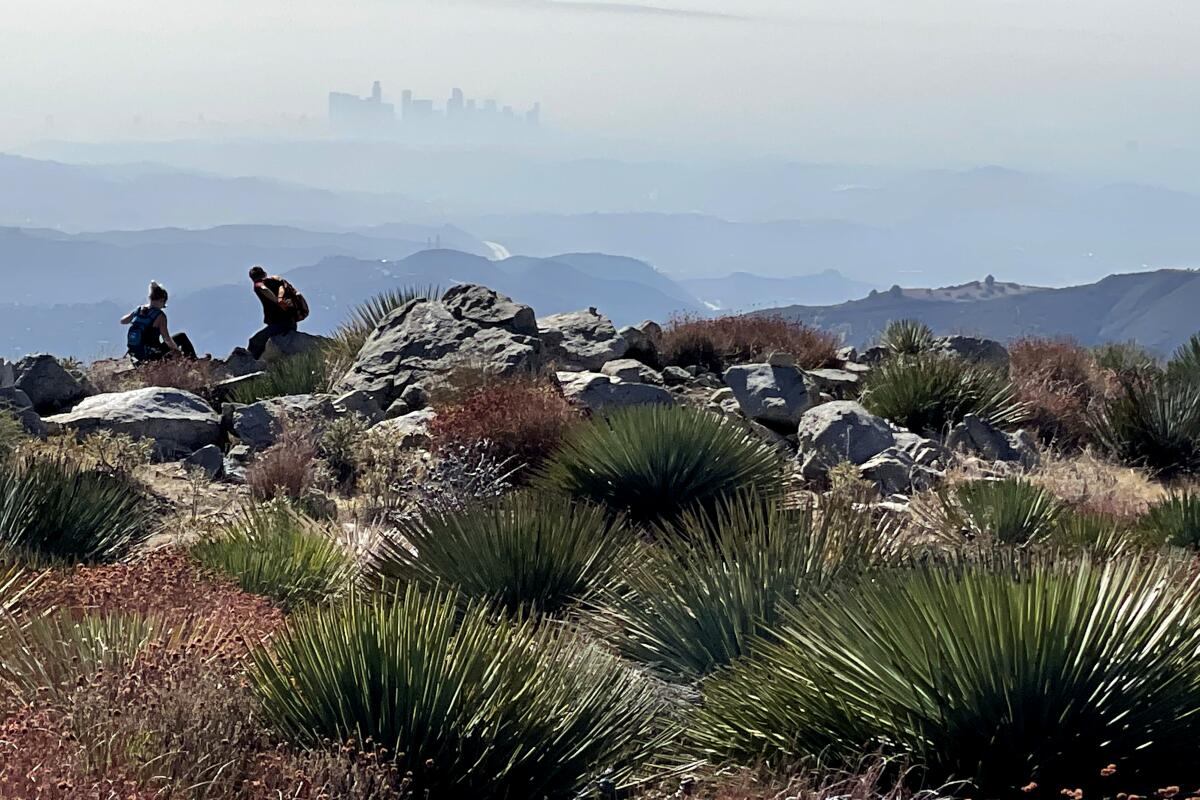
Hoyt Mountain
Park in the lot and start at the Clear Creek Visitor Information Center (which is closed because of COVID-19) on the Angeles Crest Highway. Directions to trailhead.

Zabriskie Point/Golden Canyon/Gower Gulch Loop
Park in paved lot, start five miles southeast of Furnace Creek in Death Valley National Park. Directions to trailhead.

Beaudry Loop
Park on the road and start at Beaudry Boulevard off Country Club Drive in Glendale. Directions to trailhead.
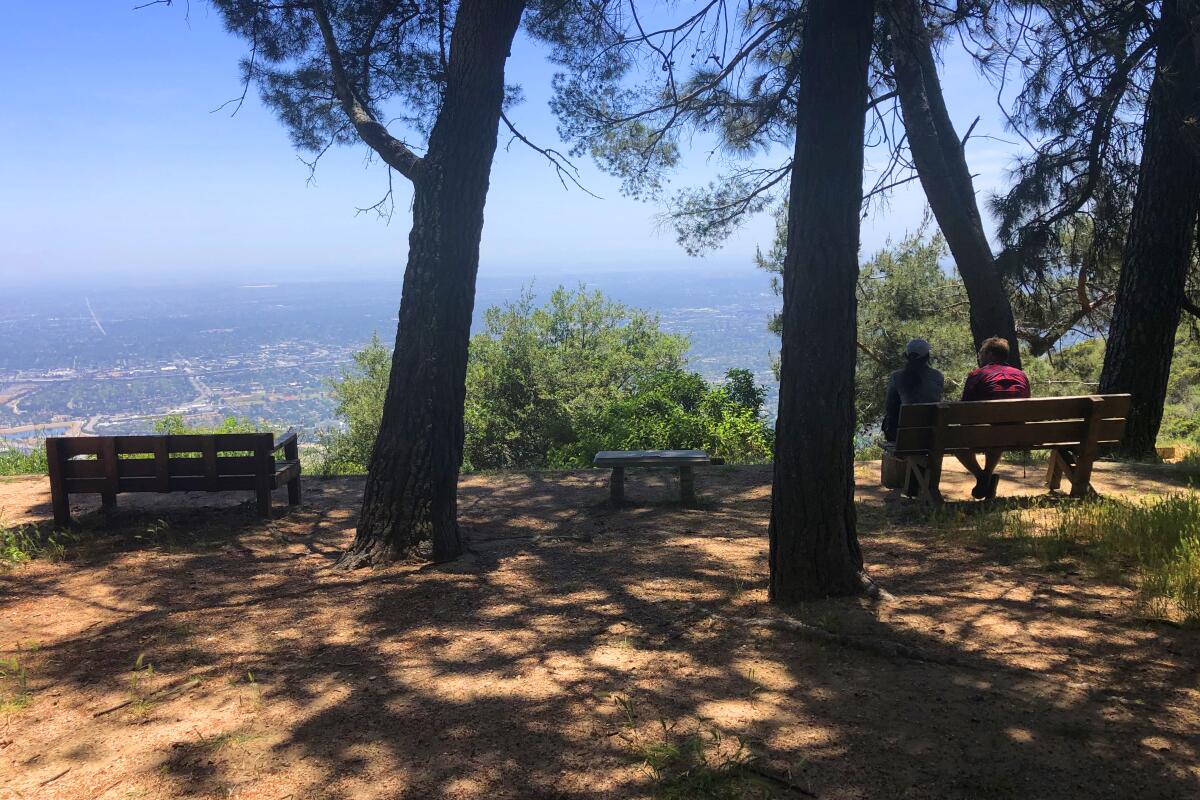
Henninger Flats
Park and start at Eaton Canyon Nature Center in Pasadena (reservations required). Directions to trailhead.

Solstice Canyon
Park and start at Solstice Canyon park entrance in Malibu. Directions to trailhead.

Mt. Lee
Park in a lot and start at Brush Canyon/Canyon Drive West in Griffith Park. Directions to trailhead.

Nicholas Flat
Park at Leo Carrillo State Park in Malibu and start from there. Directions to trailhead.

Rocky Peak
Park and start at the Chumash Trail on Flanagan Drive in Simi Valley. Directions to trailhead.

Eaton Saddle
Park and start at Eaton Saddle near Red Box, about seven miles north of La Cañada Flintridge on Angeles Crest Highway (California 2). Directions to trailhead.

Strawberry Peak
Start at Red Box, almost seven miles north of La Cañada Flintridge on Angeles Crest Highway (California 2). Directions to trailhead.

Mt. Josephine
Park at a pullout and start on the trail at Angeles Crest Highway (California 2), 10 miles north of La Cañada Flintridge. Directions to trailhead.

Mt. Lukens
Park on the road and start at the Wildwood Picnic Area, 3299 Big Tujunga Canyon Road, Tujunga. Directions to trailhead.

Inspiration Point
Park on the street, start at the end of Lake Avenue in Altadena. Directions to trailhead.

Little Harbor
Start and end at Two Harbors. Directions to trailhead.

Mt. Pacifico
Start at Mill Creek Summit Picnic Area off Angeles Forest Highway. Directions to trailhead.
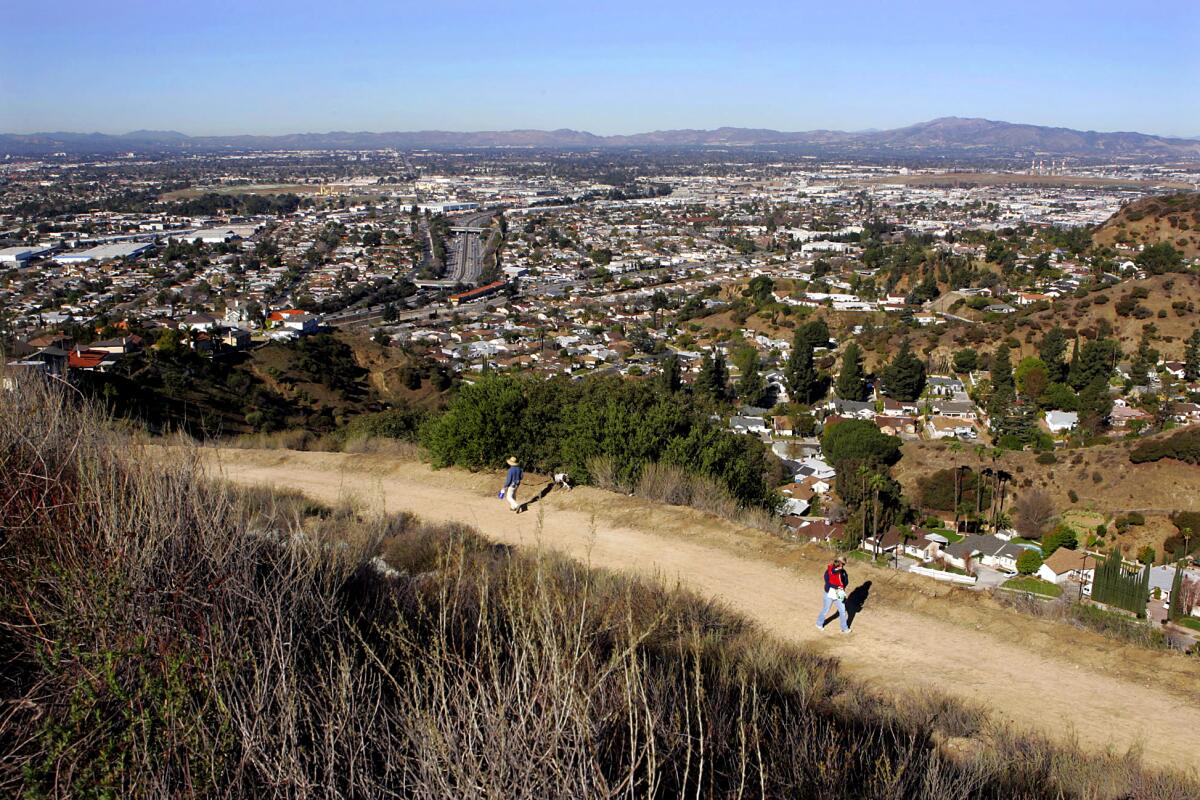
Verdugo Mountains Traverse
Park on the street and start on Olive Terrace Trail in Sun Valley. Directions to trailhead.

Bulldog Loop Trail
$12 to park, start at Malibu Creek State Park in Calabasas. Directions to trailhead.

Mt. Baldy
Park at the trailhead; start at Manker Flat near Mt. Baldy Village. Directions to trailhead.

Mt. San Jacinto
Start at Marion Mountain Trail in Idyllwild. Directions to trailhead.
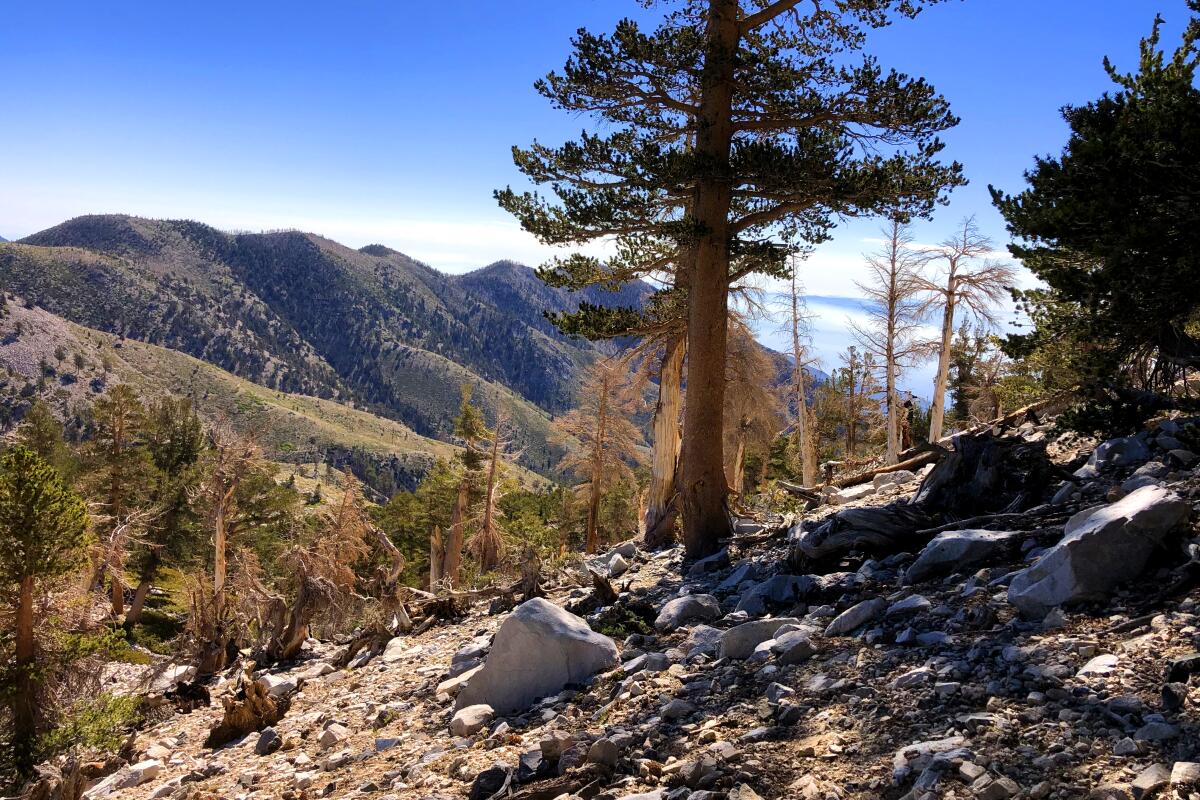
Mt. San Gorgonio
Take the South Fork Trail to Dollar Lake and on to the peak. Directions to trailhead.

Fox Mountain
Start at Big Tujunga Canyon Road near Vogel Flats in Tujunga. Directions to trailhead.

Mt. Wilson
Distance from brewery: 0.6 miles

Mt. Baden-Powell
Park and start at Vincent Gap off Angeles Crest Highway (California 2). Directions to trailhead.

Ontario Peak
Park at the Icehouse Canyon lot and start up the trail. Directions to trailhead.

Cucamonga Peak
Park at the Icehouse Canyon lot and start up the trail. Directions to trailhead.

The Three Ts
Park at Manker Flat and start up the Mt. Baldy Trail. Directions to trailhead.

Skyline Trail
Park on the street; trail starts behind the Palm Springs Art Museum. Directions to trailhead.

Park to Playa Trail
Park or take transit to the start at the Stocker Corridor Trail in the Baldwin Hills area. Directions in trailhead.

Harmon Canyon Preserve
Park at the trailhead off McVittie Place in Ventura. Directions to trailhead.

Long Canyon Trail
You may need to set up a car shuttle to complete the point-to-point trek. Check with the conservancy at cvmc.ca.gov to find out when this trail comes online. Directions to trailhead.

Indio Hills Badlands Trail
Park and start at Golf Center Parkway in Indio. Directions to trailhead.

Kim Nicol Trail
Park and start at 20th Avenue and Corkill Road in unincorporated Desert Edge, east of Desert Hot Springs. Directions to trailhead.

Wisdom Tree
When the trail reopens, try the 3-mile round-trip route, less than 1,000 feet of gain, that starts at paved Wonder View Drive near Lake Hollywood Reservoir. Directions to trailhead.
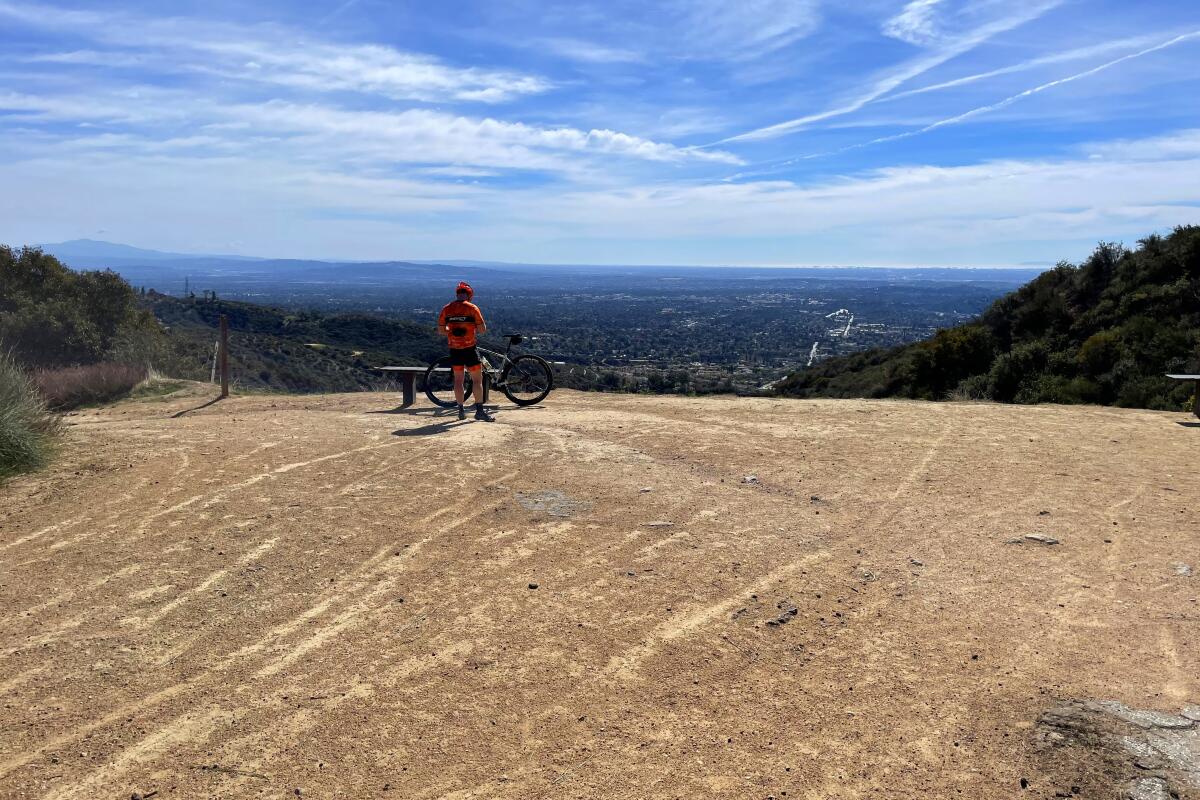
Brown Mountain
Start at Ventura Street and North Windsor Avenue near the JPL entrance. Directions to trailhead.

Vasquez Rocks
Directions to trailhead.

Mt. San Vicente
Park and start at Westridge and West Mandeville fire roads. Directions to trailhead.

Danielson Monument
Start at the trail from Rancho Sierra Vista/Satwiwa in Point Mugu State Park, Newbury Park. Directions to trailhead.

Hellhole Canyon
Park in the dirt lot (free) at Montezuma Valley Road, one mile south of Palm Canyon Drive. Directions to trailhead.

The Slot
Start at the trail two miles north of California 78 near Buttes Pass Road. Directions to trailhead.

Badwater Basin Salt Flats
Park in paved lot and start on trail 17 miles south of Furnace Creek off Badwater Road. Directions to trailhead.
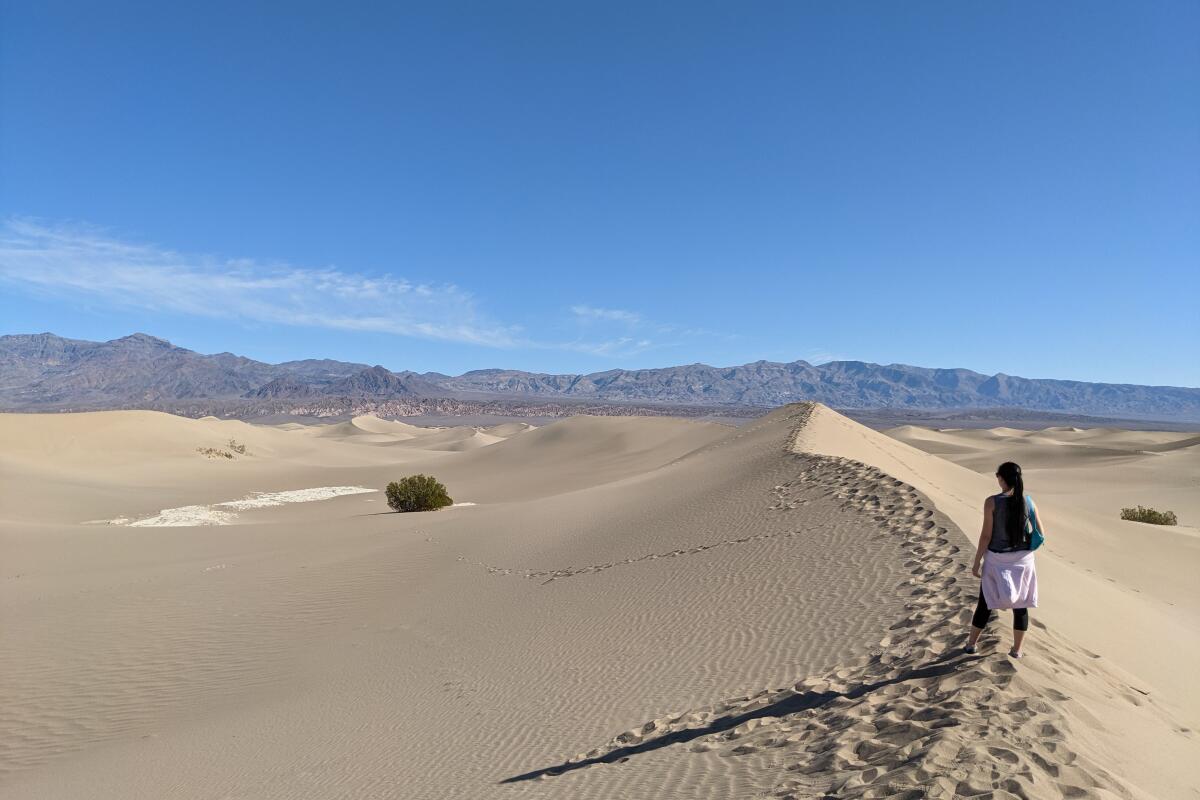
Mesquite Flats
Start two miles east of Stovepipe Wells on California 190. Directions to trailhead.

49 Palms Oasis
Free parking in paved lot; start 1¾ miles south of California 62 off Fortynine Palms Canyon Road. Directions to trailhead.

Rattlesnake Canyon
Start at the Rattlesnake Canyon Picnic Area in Joshua Tree National Park, a little more than a mile east of Indian Cove Campground. Directions to trailhead.

Wall Street Mill
Park at paved lot, start at Queen Valley Road just past Barker Dam. Directions to trailhead.

Willow Hole/Wonderland of Rocks
Start on the Boy Scout Trail near Quail Springs Picnic Area. Directions to trailhead.

Amboy Crater
Start at the parking lot (free) at Crater Road and Route 66 in Mojave Trails National Monument. Directions to trailhead.
It's a date
Get our L.A. Goes Out newsletter, with the week's best events, to help you explore and experience our city.
You may occasionally receive promotional content from the Los Angeles Times.






